Interview to some of the main manufacturers of kitchens in Italy: the managers’ opinion about the home appliance market and the strategy used to choose the partnership among companies. Surprising, to win is not the only the price logic, but also the esthetic one, as well as design and product innovation. Fundamental is the professional training of the kitchens dealers also about the functions and plusses of home appliances, to catch a consumer disoriented by the on-line sales
by Maria Eva Virga
ARAN CUCINE
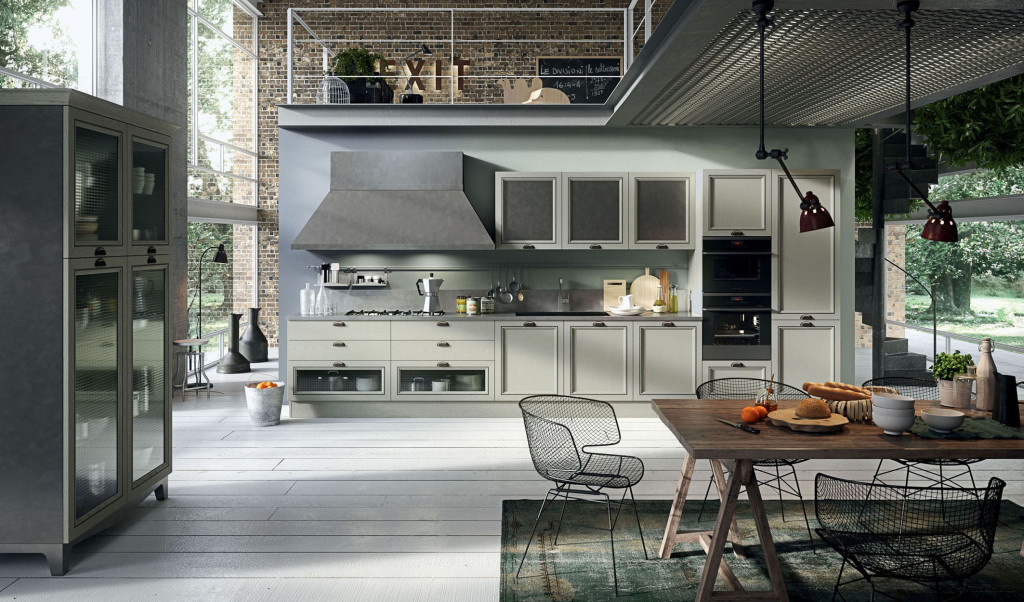
Pasquale Consola, commercial director of Aran Cucine since 2013, comes from Gruppo Natuzzi, where he has developed for some years the knowledge of the commercial dynamics of the furniture world
What do you think in general of the household appliance market and what differences can you see with the kitchen one?
The household appliances market is quite complicated, because it has a distribution a little transversal that sometimes puts us in difficulty: I have noticed that it is very competitive but also saturated, especially in terms of distribution. We define agreements with manufacturers of appliances, but then we see the affirmation in a very strongly way of sales channels, especially of the Internet. It is a market quite wild, from this point of view. In my opinion, this leads to a flattening of quality and to a strong price competition. Of quality, because only in some cases appliances are sold for their functions: the price factor predominates. It is limiting, because it is not made a sale of added value but only of price. Therefore we also are forced to adapt to the logic of the market and create promotions that our dealer can present to the final consumer. We have an increasingly substantial package of offers that drive most of the sales. This attitude goes a bit to limit both we and our distributors, because margins are reduced and everybody goes to the frantic search of the quantity. During the past two years, only a pair of our dealers asked us to be trained to better understand the entered products. The crisis, then, has reduced the amount of sold appliances so it is necessary to use inventories. If, on the one hand, it is understandable that they want to sell quickly, it is also true that every kitchen is different from the others, and the arguments of kitchens ranging from aesthetics to the finishes, but also to the quality of the home appliances that are sold. I also fell in the shoes of a consumer: of a kitchen he does not note the thickness of the door but the technical features of the oven or the quality of the refrigerator. Paradoxically, in fact, the appliances are one of the elements that is most highlighted in our product.
What are, in your opinion the main differences between a store specialized in household appliances and one specialized in kitchens?
In a specialist shop, in the area dedicated to the major domestic appliance, the consumer has access to a greater choice of products. In a kitchens store there is not a so wide display of appliances of course. To choose a kitchen, moreover, it is also important the combination, which is normally done “on paper”, unless it is visible in the shop. But a store of kitchens can have a maximum of 20 kitchens on display, with some brands of appliances. It will never be able to enter into the depth of range that a Mediaworld can have, for example, in addition to the price difference. However we do not feel so much the confrontation with them because for us major appliances are built-in models. Rather we feel the comparison with local wholesalers, who sell at lower prices than ours. If I work in the world of household appliances I would ask companies to transfer more content to the distribution, to show the consumer more innovations of their products, investing in training activities. If in fact the excellence of the home appliances distribution are the price and the wideness of the range, the criticality is the service.
With what criteria and agreement do you choose the brands and type of appliance to be included in all your kitchen?
We have agreements with all the companies of major home appliance, with a more or less structured price list that also draws from that of the manufacturer. The agreements are more or less strong depending on the brand position (the request by the consumer and the area of greatest demand) and the historical ties we have with companies: for example, one of our more established relationships is with Hotpoint Ariston. The choice of appliance that we propose in the exposition varies according to the aesthetics of the kitchen but also to the price positioning: for example for the Volare kitchen, which is a brushed lacquered, one of our spearhead, we look for high or very high brands. We combine them to the finishes, especially the oven, which has great aesthetic impact. Then it is often the dealer himself to ask us a promotional package on a particular kitchen. So we must be able to combine the price of the appliance with that of the kitchen. You have to “mix” with the kitchen to get to a balance of the total price.
What do you think about the choices to insert “special” appliances in the kitchens, in addition to the oven, the hood, etc.?
They are marginal choices for us: or the consumer already knows that can integrate them and asks the dealer to do it or he can be a particularly enlightened retailer to propose it, but should be able to go beyond the price, to offer special sales values. They are very rare cases. It is already complicated to sell kitchens … In the end, 95% of retailers ask me price competitiveness, listening to the consumer. If the consumer’s request were different, even the sale would go in a different direction. Of course, innovations are useful to make people talk about you. For example we have a kitchen that changes the cover of the wall cabinets. Honestly we have sold a few of them, but they have driven sales of all others, as a return of communication and image.

| Short company’s story Aran has been producing kitchens since 1962. Today, with more than 1,500 stores in Italy and more than 1,000 abroad, is among the first Italian companies for number of exported kitchens and in the design, manufacture and distribution of kitchen and office furniture. The company is present in more than 120 countries in the five Continents. The seven highly automated production centers are all in Italy, in Abruzzo, and employ more than 350 workers. The company obtained the ISO 9001, ISO 14001, FSC and OHSAS 18001 certifications. With more than 60,000 produced and sold kitchens every year, Aran Cucine is a reality that bases its strength on innovation and tradition. The company, moreover, is constantly engaged in the creation and development of new technologies for environmental safeguard. Its catalog is divided into two sections: one contemporary - with proposals of products with colored finishes and use of materials such as bleached oak, wengè, glass and steel, suitable to consumers looking for modern and advanced solutions - and one traditional, with proposals that recall the classic and country style. Prestigious designers and architects cooperates with Aran Cucine. The company has always invested in the sport values: it has been engaged for years to promoting cycling, motorcycling and motoring. Aran Cucine has been honored with the Superbrands Award 2015, an international initiative that rewards the big brands that continue to invest. Known for providing the furniture of the house of the Tv program “Grande Fratello” (“the Italian Big Brother”), for the 2015 edition, its last and very important project ‘of image’ is, indeed, 432 Park Avenue which, from its height of 432 meters, is today the 3rd tallest skyscraper in the world and the first in New York. With luxurious and at the same time functional flats, its interiors were followed by the Interior Designer Deborah Berke, who chose the Aran collections to furnish the tailored kitchen environment, the bathrooms, the bedrooms and laundry rooms. |
SCAVOLINI
Vittorio Renzi, general director of Scavolini since 2003, and previously of Ernestomeda, has been working in the furniture market for twenty years
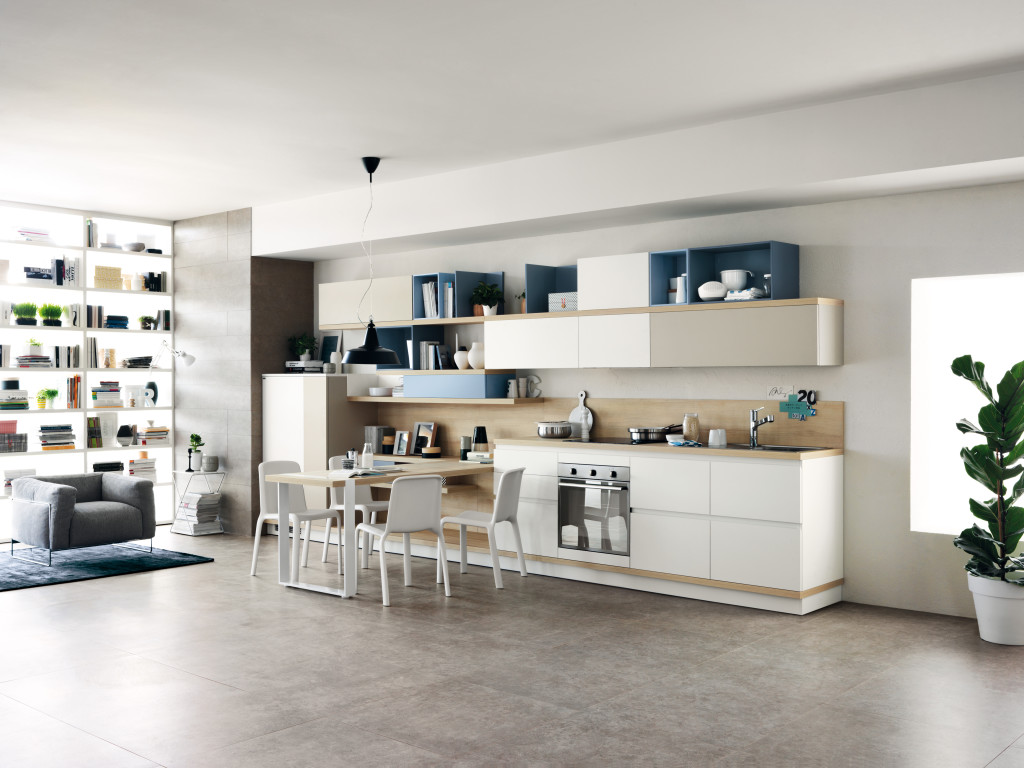
What is your opinion about home appliance market?
It is a real competitive market where, in recent years we have seen, on the one hand a generalized product downgrading looking for a more and more aggressive price and, on the other, the development of products with new features. Many evolutions also in terms of players in the field, with important acquisitions.
What is the first thing do you notice entering a store that sells appliances?
I can refer to our stores that sell, in addition to kitchens, bathrooms and living also many appliances, mainly built-in. The brand range has expanded and, in addition to what is displayed, our dealers have access to a very big offer with which they meet the increasingly different needs of our customers. Their preparation about the product features is essential. On this front, we try to be close to them providing adequate support tools and a lot of training.

| Short company’s story Scavolini was born in Pesaro in 1961, thanks to the initiative of the brothers Valter and Elvino Scavolini, and in a few years it is transformed from a small company for the production of handmade kitchens in one of the most important Italian industrial companies. In 1984 Scavolini conquests the leadership of its sector in Italy. In a short time it has achieved very considerable dimensions and today it has an industrial site of 200,000 sqm (of which 90,000 are covered) where 550 workers are employed. The result of the company's commitment is demonstrated by the group's turnover, which in 2015 exceeded 200 million euro. In addition, the downstream activities of suppliers of modular parts, which over the years has grown around the company, is now an important reality for the local territory. Today Scavolini is a landmark not only for kitchen but also for living room and bathroom, thanks to a wide range of "made in Italy" furnishing solutions characterized by quality, design, detail care, reliability, high modularity and excellent value for money. |
SNAIDERO
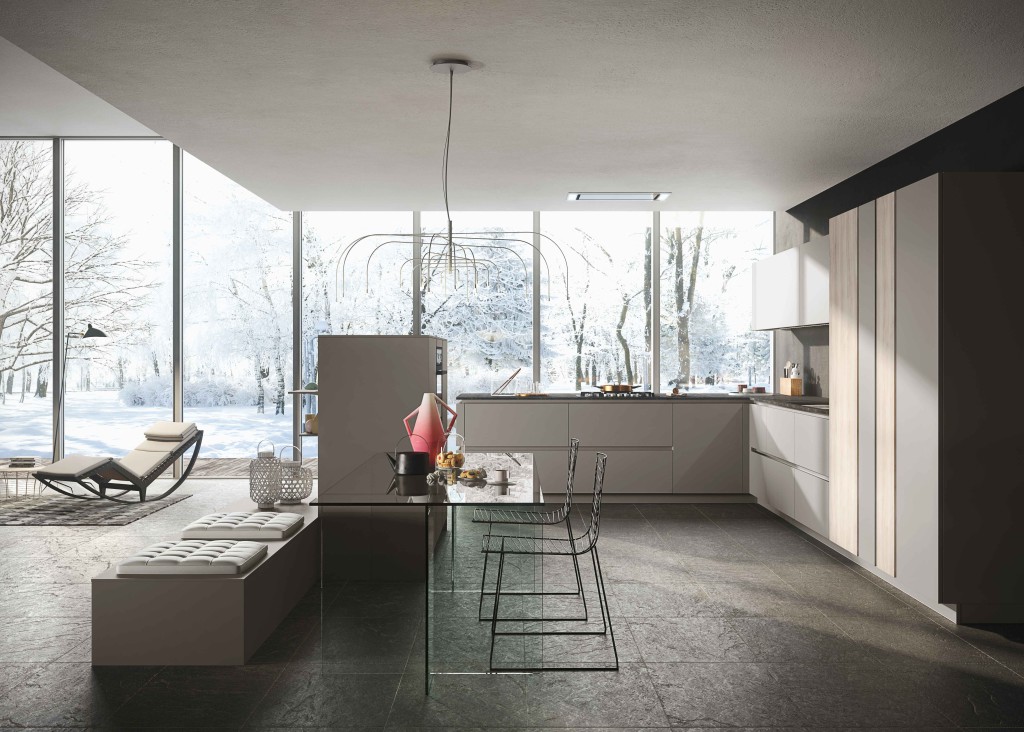
Roberto Lizzi, commercial director Italy of Snaidero since 2013, expresses the priorities of kitchens manufacturers regarding the choice of home appliances; esthetics, partnership, diversification through the training about the product
What do you think about home appliances market?
Home appliances are fundamental for a kitchen manufacturer: it represents about 30% of the sales revenue of each kitchen. It is strategic. A company that produces kitchens must safeguard it. Today there are some strains in this world, because the distribution of built-in appliances, in our case, is basically divided into three parts: they are sold by the kitchens store combined with the kitchens themselves, they are proposed by the so-called parallel market, namely the wholesalers that directly supply the furniture shops, and they are sold by Internet. With the e-commerce growing and of the relative aggressive commercial policies, even in the home appliances segment, our stores are found unprepared on the price! It is a very felt problem by the furniture retailers, a very hot topic.
How to get out?
We have been thinking for about two years to implement special promotions for those who buy the completed kitchen with the appliances: we offer attractive terms, guaranteeing our product for ten years. Consumer is confused and to help him we offer this opportunity, by studying the operational marketing promotions at local level. Usually, the promotional periods are two: one in spring and one in autumn. Those who buy a full kitchen with a minimum price fixed, receive a bonus that can be spent directly in-store.
How do you think, instead, about the specialized large distribution?
In the collective imagination of the average consumer, the large distribution gives the idea of savings money, especially to new buyers, to young people. It is true, it has this competitive advantage and also the opportunity to display a wider range of products, even if it often does not cover the built-in. Our furniture stores have to propose specialized solutions: they must specialize and be very prepared also about household appliances. For example, some store has began to show customers a working kitchen, let private costumer directly try and use it. Just like a car dealer let people try a car…That’s the difference between the large distribution and a furniture store: the point is working on training. Some household appliances companies, more sensitive, have already started to develop this kind of activity on the store with us.
With what criteria do you choose the appliances companies you work with?
For us it is very important to create partnerships with appliances companies that are interested in the professional training on the territory. Today more than ever, in the furniture world, we have to invest in training and this is because consumer has become more and more careful, looking for information on the Internet, and knowing exactly what he wants. This means that retailers must change their approach: the products should not only be seen, but they must also be explained, tried and touched. The only way to differentiate is therefore let the consumer live an experience in stores: only in this way it is possible to obtain new and significant market shares. Another element that drives us to choose a company of household appliances instead of another is the aesthetic and functional aspect of their products: our kitchens have always been recognized as a combination of quality and design and those who choose a Snaidero model expect that also the appliances respond to these characteristics. It is for this reason that our marketing and exhibitions office carefully analyzes and chooses what will be the appliances that most of all can be perfectly combined to our kitchens. Finally, there are companies, such as Electrolux, which have destined a specific brand, in this case Aeg, explicitly to the kitchens, on which also realize price promotions, trying not to propose it on the Internet. It is a kind of “dedicated line” that we can offer to our dealers as “promotional kit”, giving them a significant competitive advantage.
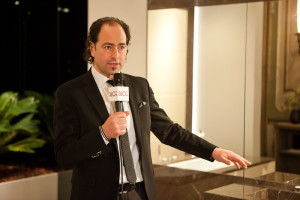
| Short company’s story Snaidero moves its first steps in Majano (Udine) in January 1946 through the founder Rino Snaidero, a pioneer of the reconstruction, which decides to take on himself a job that, since the 60s, has led the brand, one of the first, to inaugurate the era of the author's design, ‘weaving’ relationships with the best exponents of the made-in-Italy design and engineering: from Mangiarotti to Gae Aulenti, to Offredi, up to the prestigious Pininfarina and Iosa Ghini studios. Over the years, several projects were born, including the Spazio Vivo kitchen, the first project in the world with island at the center of the room, already in 1970 at the Moma in New York and recently also protagonist at the "Arts & Foods" exhibition at the Triennale in Milano. For 12 times the company won the Good Design Award of the Chicago Atheneaum Museum of Architecture. For over 40 years Snaidero has been exporting kitchens all around the world, aiming at a positioning that plays on the value of a refined made-in-Italy design, privileging the values that have always been at the base of the brand: quality, durability, beauty, environmental sustainability and ethics. In Snaidero experimentation is at home both in design, both in the search for new materials. Snaidero requires, for example, the curve in the kitchen, symbolizing a positive and reassuring thought, and is among the first companies to have experienced design techniques based on Universal Design, with the Skyline project, giving people the ability to move free in the domestic space. This year the company celebrates 70 years under the leadership of the current president Edi Snaidero. |
VALCUCINE
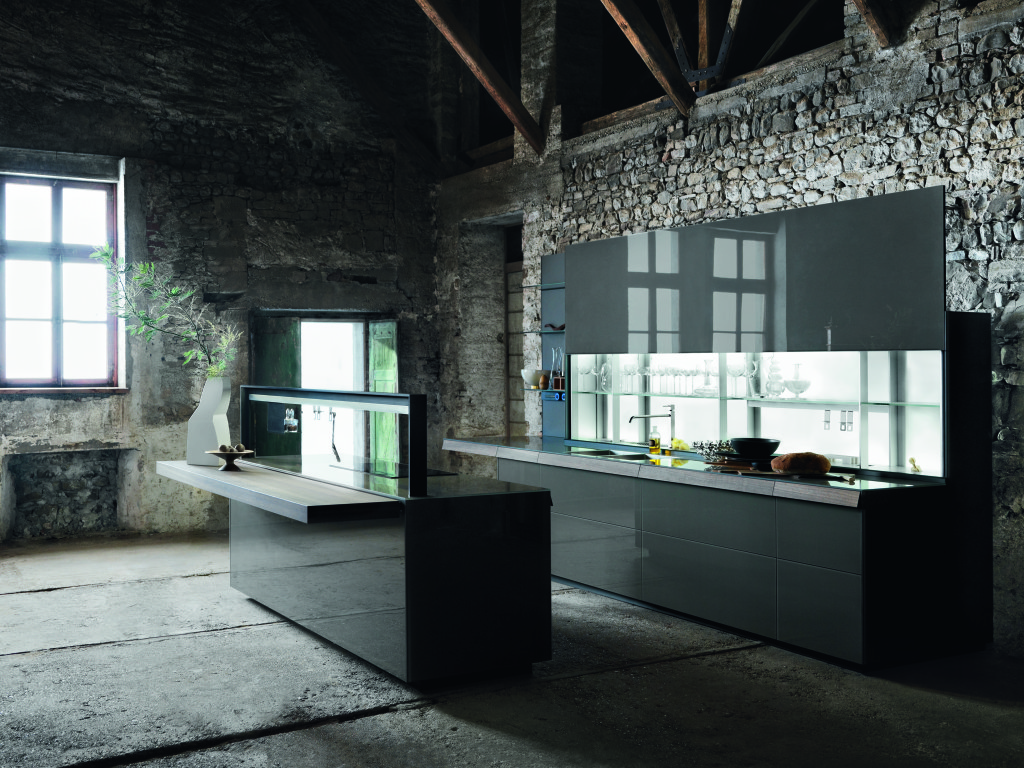
Sara Erbetta, head of marketing of Valcucine, left Whirlpool last year to enter the kitchens world
What is your idea of home appliances market in general and what differences do you find with the kitchen market?
The market is very connected to the real estate trade and so it has recently been adversely affected in this way. The competition is more stable in the kitchens operators world, while in the major appliance sector – and even in the small appliance one – the context is more aggressive in terms of the distribution dynamics. Regarding major domestic appliances, the situation is stable and we can see the rise of the Korean, Chinese and Turks players, that have enlivened it with offers on the low end, but also medium and medium-high, even arriving to touch very interesting price index. However, there are also positive effects of this dynamic: it has influenced the product innovation. The new players, moreover, also had to gain position in the stores, in some cases at the expense of others. The kitchens world is a little bit different: they live more of agreements and, in particular, on market segments that, such as of Valcucine, is very much influenced by issues of range positioning, as well as by the stylistic elements. Obviously, we are speaking of “important” products, which are sold in significant moments for the consumer (for example his marriage) and that lives a long process, even 6-12 months, before the purchase. The decision of the kitchen is “primarily” and then they pass to the choice of appliances which, in our proposals, are included.
What is the first thing you notice entering in a store that sells appliances? What do you think the excellence of this type of distribution are and what the critical issues?
My impression is that the ‘classical’ way to display products, that is the exposure of many references with little assistance, today can live critical issues, especially with the determinant development of the on-line sales. Today the consumer adopts the “show rooming”: he comes into a store and checks the prices immediately. Even the convenient offers of large distribution can be attacked by other distribution systems and that is why many chains are equipped to directly follow the on-line. In the “brick & mortar” shop service and advice, however, are always relevant. In fact, they are regaining importance: people look the product and then ask assistance. All this might affect different choices from a distributive point of view: maybe they could focus more on quality and less on quantity. Taking into account the fact that the on-line purchase in Italy is anyway much lower than in the UK, France and Germany. And even than other countries considered less developed. In the store where kitchens are bought, be it a mono-brand or multi-brand one, where speaking about appliance we mean built-in, we are linked to much higher service dynamics. Therefore the household appliance brands must organize a support for the kitchens retailer and perhaps deliver differentiated ranges per channel.
With what criteria and agreement do you choose brands and kind of appliance to be included in each of your kitchens?
From the point of view of choice, the characteristics are: first, the similar brand positioning, both in terms of values and of the price positioning, as well as of the overall image. The higher are the affinity, the better is the partnership. The world of kitchens offers modular products with price points less stringent and its placements are different. So we can choose more partners. The first criterion, then, is branding. The second are the business opportunities, which are different from market to market: they include important criteria such as the assistance, for example in the high-end range of kitchens, because the expectation of consumers is high. In this case it is very important the after-sales service, considering the fact that a kitchen has a repurchase cycle of 20-25 years, while that of an appliance is about 10 years. Valcucine maintains consolidated and strong partnerships with a limited number of producers that also have the higher share of display. The retailer proposes a range of established brands and frequently proposes, in the display, a set of appliances of the same brand that drives much the consumer even in terms of aesthetics. From the point of view of products sold, actually it is also the consumer to choose. For example: on ovens, hobs or hoods, which are visible products, he is much more influenced by exposure. While for refrigerator or dishwasher also prefers more personal choices.
Let’s make an example of a combination between kitchens and home appliances.
For example: we offer, among others, the Artematica range, which works a lot on materials and cleaning of the lines. For this kind of kitchens we selected two/three partners that are coherent with this kind of product. Our kitchens, however, are also of large dimensions and therefore we also use “niche” brands, especially for abroad markets. Particular appliances are also present, in sales, such as steam ovens, warmers or wine cabinets, which would not be present in the traditional set. Ours is a kitchen that speaks to a high level consumer. Obviously there are also medium-high end models. Wine cabinets, for example, are often required by the consumer; other small appliances, instead, as the warmer, are products that sometimes the consumer does not even know. However, when he notices them on display in a kitchen, he often buys them because he understands their added value. It is for this reason that I say that the support of home appliance producers to the distribution of kitchens is essential to facilitate consumer to design his own kitchen. The kitchen retailer must be able also to recommend the right appliance!

| Short company’s story Valcucine company was established on 17 March 1980 by the business partners Giovanni Dino Cappellotto, Gabriele Centazzo, Franco Corbetta, Silvio Verardo. The head office is in Pordenone. The designer Centazzo claims a series of ‘first-born’ in design: in 1981, the first cabinet door with ‘soft line’ curved edge and handle realized on the thickness of the cabinet door itself (in the "Ghianda" model) while, in 1983, the first example of just in time modular cabinet door with the insertion of the color through a silicone profile (in the "5stagioni" model). In the same year, the "Mela" model, the world's first door covered in PVC, with the possibility of deformation of the surface. In 1984, instead, the "Quadrifoglio" model, the first cabinet door with a wooden frame and central panel in the frame wire. In 1988 the "Artematica" program was presented, still in production, with no visible aluminum frame from the outside and with aesthetic panel in stratified HPL, 5mm. The first wood door in the world and monoblock in HPL. Valcucine has a satellite network of providers, insisting on quality and respect for the environment (for example by imposing water painting instead of solvent-based one). In 1991 the "Semantics" model was presented, a new way of composing the kitchen by creating defined blocks. In 1993, the "Fabula" model was launched, first kitchen with colored wood and inlaid with pictograms cabinet doors. In 1996 the kitchens program "Recicla" was presented, made with door frame of aluminum and 2mm panel adopting technologies from the automotive industry. At the end of the 90's the care for the environment brings Valcucine to join the industrial association Bioforest and subsequently to obtain the ISO 14001 certification in 2001. In 2002, the wall cabinet has an aluminum and glass structure a door in alveolar aluminum and Led lighting. In 2006 at Eurocucina it presents the partnership with Alessi. In 2009 it realizes the first glass base, 100% recyclable and 80% reusable. Since 2008 the Artematica Vitrum kitchen is displayed at the MOMA in New York. Since 2010 Valcucine goes beyond the kitchen opening the production to the living. |
VARENNA CUCINE
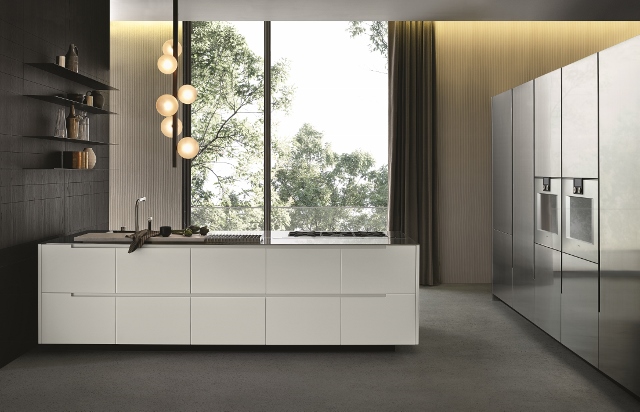
Osvaldo Salvioni, commercial director of Poliform since the beginning of ’90. Since 1996 he also has been coordinating the sales of Varenna Cucine in Italy
A detached point of view on the appliance market
For us, manufacturers of furnishings and kitchens, the home appliance market is very positive because the appliance has a significant weight on the choice of the kitchen. The fact of joining the kitchen project to an important home appliance brand gives to the consumer the certainty to buy a excellent product. And that’s why sometimes careful and capable retailers include important appliances brand also in kitchens of medium-high price range, giving in fact an added value to the kitchen itself. A simple example: a Miele’s household appliance costs on average much more than another similar product, but has a very high durability and the brand gives to the consumer a huge security. A brand of quality appliances and a well-designed quality kitchen is a binomium that we always offer. The appliance can get so, in our case, to account for 30% of the value of a kitchen.
What are the main differences do you see between the retail of home appliances and your reference dealers?
Nowadays it is crucial that a distributor of kitchens have a good training on appliances so as to counteract the specialized appliances stores, where often the sales network is highly specialized. We ourselves have recognized in recent times, the importance of the sales force training. Generally about 50-70% of the kitchens is already sold in conjunction with the appliances, also because often it is not imposed, and the consumer, if has special needs, goes to buy them to some specialized chain.
With what criteria and agreements do you choose brands and kind of appliances to be included in each of your kitchens?
I mentioned Miele, because it is one of the brands we use most, being coherent with Varenna’s image. But we have five suppliers of appliances, that we propose to our stores with already complete kitchens. Usually the dealer buys them from us. Of Miele, for example, we propose the top of the range with the Phoenix kitchen, but we also can propose it with a kitchen with finishes such as laminate obtaining a beautiful product anyway, although cheaper. Each of our retailers has at least two/three suppliers of home appliances at his disposal and so we try to offer a wide range and also a good range of prices.
In this “not schematic” vision of combination between home appliances and kitchens, how the “new” appliances can fit?
First we must say that consumer generally requires the classical appliances: refrigerators, dishwashers, ovens, hobs and hoods. He asks us other kind of household appliances only if he already knows them. However, I recently noticed a tendency to require steam ovens, and then we have an offer also from this point of view. We are always looking for new ways to cook or to propose a kitchen: we must always stimulate the consumer. I am convinced, in fact, that, if the price is justified and motivated is not really so important, if a proposal is made at a project level, involving functionality and durability. The price is a component but not the only value. If a customer is satisfied with the purchase he made, he even forgets how much he has spent! The balance among quality, price and satisfaction of the product is essential. With a good quality of a “kitchen” product, the right price can swing up to a 20% more or less. But the difference must to be noticed. The philosophy of Varenna is to continue with innovation and research, offering a product with a good quality/price ratio.
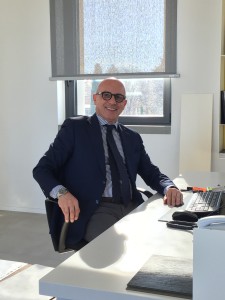
| Short company’s story Varenna is the Poliform’s division, acquired in 1996 and dedicated to the production of kitchens. Poliform, founded in 1970, has a tradition in the world of furniture dating back to 1942. Evolution of a craft business, Poliform has immediately invested in new production technologies, orienting the proposal to the modular systems. Poliform then became an industry: the supporter of this change, Alberto Spinelli, Aldo Spinelli and Giovanni Anzani, still at the head of the company, manage to combine a specific technical knowledge and a culture of "know how" with an entrepreneurial vision in tune with social and economic changes of that period. Over the time, the representatives of the third generation have been progressively joined the company. The goal is to ensure that Poliform maintain its family dimension in the future, making it an international company but with strong roots in a land rich in traditions, such as that of Brianza (near Milan). Varenna's mission is: technological innovation aimed at ensuring maximum functionality. Combining aesthetic definition with a high operational capability, the kitchen collection makes proposals of great technical value. The wide range of household appliances ensures the freedom of choice, with proposals of the best brands to allow to equip the kitchen according to everybody’s needs. Varenna’s collection, result of the collaboration with some of the most prestigious Italian and international designers, is a modular system: every kitchen can be made in all the different sizes. The bases provide 8 widths from 150 to 1,200 mm. In addition, all Varenna proposals can be tailored made. Varenna uses paints without heavy metals, resistant to perspiration and saliva (particularly important detail for kids). The glass is tempered and the worktops are made of high pressure laminate, with very high resistance to scratches, abrasion, impact, heat and water. Each Varenna’s kitchen is made in Italy and is unique because it is produced to order for each customer. |
VENETA CUCINE
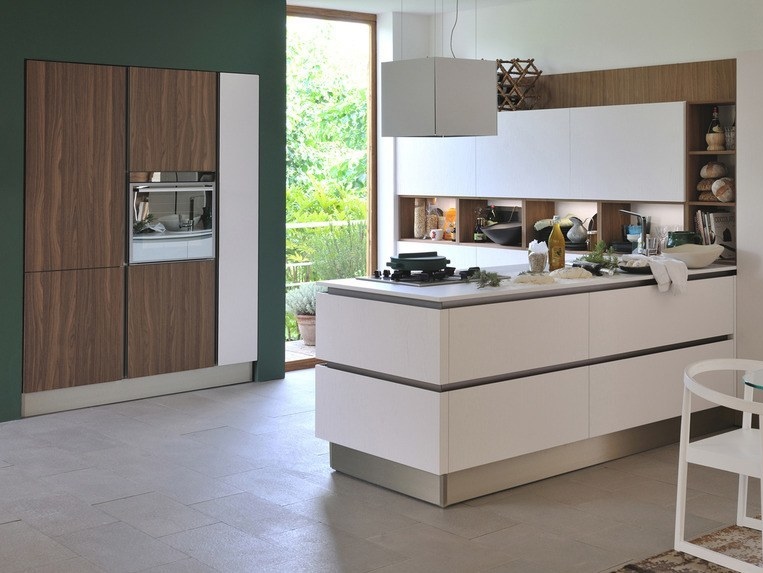
Stefano Benvenuti, sales manager of Veneta Cucine, comes from Indesit Company, where he has worked for eight years and well know the world of household appliances
We ask him too, so, what does he think about the home appliances market today, “from the other side”
Appliance is for us a “of which”. It is an element of the kitchen which accounts for 35-38% of our turnover and that of our customers. So it is very important, but not essential as in the large-scale distribution or in the freestanding sector. About a decade ago in the home appliance world, they said that the kitchen retailers would be destined to lose the appliance, in favor of the big retail chains. It has not happened and will not happen. Margins are surely changed. When a dealer asks me a brand, wants to know where it is distributed, what are the prices, what the promotions. Ten years ago he would have asked me if aesthetics were suited to the kitchen. However, today the customer does not split the purchase of kitchens and appliances: he asks the dealer’s advices, almost 100% leaving him the choice, but also being oriented by the current promotions. Built-in sector has not taken off in the large distribution, because the private client perceives the technical complexity of installation and design. So he thinks convenient consult a specialist. Actually, if you are in a large specialist store in home appliances you cannot find much information about the kitchen. Today the promotion on the household appliances offered by the kitchen retailers also makes a difference. Ten years ago it did not happen. The large distribution has never managed to become a specialist in this product. But it won the battle of the replacement of major appliances.
What is the first thing you notice when entering a store that also sells appliances?
I notice that the appliance product is bad presented, unlike the TV, for example. Built-in is left to itself: the oven, which has no walls, takes shape and beauty when it is placed inside a cabinet. When I enter, instead, in one of our customers shop, the aesthetic combination, of the colors and handles, in short, all the choice, is visible, it made with care. We invest a lot in the display, it is our first item of expense, and in the exhibition we also have great care of the appliance: it must be update and beautiful also from the aesthetic point of view, first of all, oven and hob. We also take care of the refrigerator, for example by arranging its shelf, because it is beautiful to look also when someone opens it. This does not always happen in appliances chains, where maybe you still find the polystyrene inside or shelves are not all mounted.
With what criteria and agreements do you choose the brands and the kind of appliance to be included in each of your kitchens?
We privilege the brands for which built-in is more important than freestanding. But we are also interested in accuracy and punctuality: not all are aware of the fact that we have deliveries to make, that a specific product must arrive at a specific date, for example, for a couple who gets married on a specific date. We have to talk to those who speak our same language. The interlocutors of the built- in are the same for years, because in them we recognize reliability and precision. Among the brands, the market requires us first Electrolux, Whirlpool and Hotpoint, which hold 70% share in the built-in, then we complete the range with brands such as Bosch, Franke and also with the brands of hoods Faber, Elica and Falmec. Of course we also try to bring margin: we also try in the appliance. And we are always looking for innovative products. For example now is the “time” of freestanding mixers, that we put in the exposition of kitchens. We give the most of them included in the price, but it is an external element which, if shown, helps to sell, of course on the high-end range. If the customer is more demanding, in fact, gladly considers products such as mixers, the built-in wine cellar, the coffee machine, the hoods built-in the hob. We have been, years ago, among those who have developed a built-in refrigerator with coffers. And now we are developing with Whirlpool a 70 cm built-in refrigerator. And the proof of the importance of the choice of the appliance into a kitchen is the fact that I was called in Veneta Cucine as sales manager Italy just for home appliances, as well as area manager for Lombardy, Sicily and Campania.

| Short company’s story Veneta Cucine is a family business in Treviso province with more than 40 years of history. The company over the years has been transformed from a local reality to an international group and the business model has evolved from entrepreneurial in management: the founder Giacomo Archiutti is now joined by his sons and a team of managers. The group has 90,000 square meters of covered factory space, divided between the production/management complex at Biancade (TV) and the factory for the processing of wood at Codissago - Longarone (BL). It employs more than 500 workers through which designs, manufactures, manages, administers and distributes 10 systems, 40 models of seven different bodies, which generate 300 color and material variations. The company introduces on the market 60,000 kitchen environment each year. Since 2003, Veneta Cucine has the ISO 9001 certification, issued by the German TÜV. The company, in 2006, introduced the water painting with complete cycle that, while maintaining excellent quality performance, reduces toxic emissions. In 2008 the production line HOMAG is introduced, fully automated, which manufactures finished and packed kitchen components: tops, shelves, counters and doors. The sale of Veneta Cucine products is entrusted to a distribution network of more than 1,000 qualified dealers in Europe, Asia, Africa, North America and South America. Reliability and beauty are the values on which the range of products is focused, divided into areas of taste, realized both in the light of the most current forms of aesthetic research and re-reading the heritage of tradition in the key of evolved functionality. All this while also offering affordable products. Since 2011 the kitchens proposed by Veneta Cucine are marked with the brand "BBS, Bacteria Blocker Silverguard", which identifies all the pieces and elements subjected to antibacterial treatment, those that regularly may have a contact with food: work plans, bodies and funds the drawers. In 2012 Veneta Cucine has implemented an environmental management system according to ISO 14001. The structures of the elements that compose the kitchens are made with 100% recycled wood. 2013 is the year of the OHSAS 18001:2007 certification on the management system for health and safety at work. |



